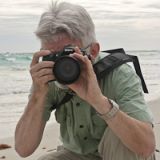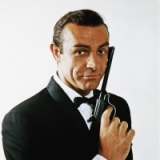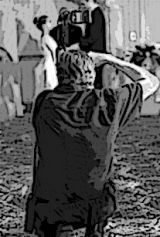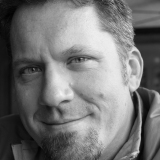- Forum
- General Discussion | Introductions | Off Topic Forum
- Photography General Discussion
- Why is fast lens important?
Why is fast lens important?
-
 Topic Author
Topic Author
- 520snic
- New Kid On The Block
-
- Nikon D3000
- Followers: 5
- Posts: 39
-
Points:
0
Post #158816
To have a greater DOF, you need a lower fstop, so why is it so important to have a 2.8 lens?
I know photographers who have a 4.5 lens, and they are not happy with it, they want a faster lens. How often does a photographer really shoot at 2.8?
-

- cod
- Snapobsessed
- Nikon D300S
- Followers: 71
- Posts: 484
-
Points:
1165
Post #158821
1. Sometimes I deliberately want a shallow depth of field to isolate the subject from the background. It can turn a busy background in to a smooth, creamy out of focus blur that doesn't distract from the main subject.
2. Sometimes the ambient light level is so low that I need to use a large aperture, even though I might wish for more depth of field. I encounter this most when shooting school theatre, and sports in poorly lit gyms. I need action stopping shutter speeds that can only be achieved with high ISO and large aperture under those conditions.
-
 Topic Author
Topic Author
- 520snic
- New Kid On The Block
-
- Nikon D3000
- Followers: 5
- Posts: 39
-
Points:
0
Post #158823
On average how much does a photographer really shoot at 2.8? (or shooting at their highest aperture) I know every photographer is different, depending on what they shoot.
-

- Henry Peach
- Apprentice
-
- I currently use a 5DII or Sony Nex-3 most of the time.
- Followers: 50
- Posts: 2925
-
Points:
16
Post #158833
I think it is true that many of us purchase fancy equipment we really don't need.
I do shoot at f/4 or larger apertures (smaller f/#) for the majority of my wedding, portrait, and live music photography. Even most of my family snaps are probably shot in that range. I do use it for shallow DOF, but there are other ways to control that. Most important to me is that it lets me shoot in 1/2 to 1/4 the amount of light as a f/4-5.6 lens.
Most consumer zooms maintain constant aperture size as you adjust focal length. Since the formula for f/stop is focal length/aperture=f/# this means as the focal length increases, but the aperture remains the same size, the f/stop increases. You get f/4 at 28mm, but f/5.6 at 75mm. F/2.8 zooms maintain a constant f/stop as you adjust focal length. The size of the aperture changes along with the focal length so that the f/stop remains the same. If I set the lens to f/2.8 at 28mm it's still f/2.8 when I zoom out to 75mm.
It's popular advice that lenses tend to be sharper stopped down a bit. This isn't true for every lens, but in general it's accurate about the lenses I own. I used to say I was buying f/2.8 lenses to shoot at f/4, and if I had a f/4.5 lens I'd be using it closer to f/8. I don't have much experience with consumer zooms so I can't comment how sharp they are at max aperture, but the f/2.8 lenses I've used from Canon, Sigma, and Tamron are very sharp at f/2.8. They contend well with Canon prime lenses set at f/2.8, and by the advice above the primes ought to have the edge. Pixel peeping there is an improvement in sharpness even stopping down 1/3rd stop. By f/4 it's pretty much as good as it gets. The thing is that in prints and web display the difference is almost impossible to see. So I've learned that I should have no fear shooting at max aperture.
I've spent the last 6 or 7 years shooting only with primes and f/2.8 zooms. My new compact camera's regular lens is f/3.5 - 5.6, and it's driving me crazy! Being stuck with f/5.6 in a dim nightclub is tough when I'm used to f/2.8.
-

- Baydream
- Moderator
-
- Canoni/60D/70D/5DmkIII
- Followers: 388
- Posts: 11185
-
Points:
7280
Post #158847
Add shooting wildlife at dawn, dusk, or in overcast weather and you've covered it.cod wrote: I have two reasons.
1. Sometimes I deliberately want a shallow depth of field to isolate the subject from the background. It can turn a busy background in to a smooth, creamy out of focus blur that doesn't distract from the main subject.
2. Sometimes the ambient light level is so low that I need to use a large aperture, even though I might wish for more depth of field. I encounter this most when shooting school theatre, and sports in poorly lit gyms. I need action stopping shutter speeds that can only be achieved with high ISO and large aperture under those conditions.
Henry's right also. Kind of like jumping out of your Grand Cherokee into your Rav4 and wondering why the seats don't heat up on a frosty morn
Shoot, learn and share. It will make you a better photographer.
fineartamerica.com/profiles/john-g-schickler.html?tab=artwork
-

- cod
- Snapobsessed
- Nikon D300S
- Followers: 71
- Posts: 484
-
Points:
1165
Post #158855
-

- Scotty
- Agent 007
- James Bond, PT mod.
- Followers: 1088
- Posts: 9888
-
Points:
15096
-
 Topic Author
Topic Author
- 520snic
- New Kid On The Block
-
- Nikon D3000
- Followers: 5
- Posts: 39
-
Points:
0
-

- Scotty
- Agent 007
- James Bond, PT mod.
- Followers: 1088
- Posts: 9888
-
Points:
15096
Post #158952
520snic wrote:
Scotty wrote: I shoot at f/2.8 all the time.
Why? on all your lenses? I understand having more light, but don't you ever want more of a DOF?
Of course, don't you ever want thinner depth of field?
When the last candle has been blown out
and the last glass of champagne has been drunk
All that you are left with are the memories and the images-David Cooke.
-

- Scotty
- Agent 007
- James Bond, PT mod.
- Followers: 1088
- Posts: 9888
-
Points:
15096
-

- Scotty
- Agent 007
- James Bond, PT mod.
- Followers: 1088
- Posts: 9888
-
Points:
15096
-

- Happy Snapper
- Photography Hooked
-
- Nikon D810 and Nikon D4s
- Followers: 89
- Posts: 750
-
Points:
1828
Post #158972
Gripped Nikon D810 --- Sigma 70-200mm f/2.8 --- Sigma 10-20mm f/4 --- Nikon 50mm f/1.4 --- SB600
-

- Screamin Scott
- Moderator
-
- Nikon D610, Nikon D7100, Nikon D300, Olympus OMD E-M5 MarkII, Olympus OM-D E-M10, Olympus Pen E-P3 + film SLR's
- Followers: 1384
- Posts: 6866
-
Points:
40251
Post #159085
-

- Stealthy Ninja
- Moderator
-
- Fuji X stuff and a 1DsIII for some reason
- Followers: 982
- Posts: 16300
-
Points:
6837
Post #159121
Another question to ask is why would you want to shoot with a massive DOF all the time? Don't you want blurred backgrounds sometimes?!
Sometimes you want the DOF control. Then a 2.8 or faster lens will let you have this control. You can always shoot a 2.8 lens at f/8 if you want. You can't shoot a f/4 lens at 2.8.
As for the question... yes I shoot at 2.8 all the time. I do events and I need the speed and I like the subject isolation.
Subject isolation is a major reason to shoot at fast apertures. After all, you can get a deep dof with any ol' camera.
-

- Justin Black
- Vendor
- Nikon: D810; Fuji: X100s, X-Pro1, XE-2
- Followers: 101
- Posts: 39
-
Points:
2036
Post #159143
Photographers who only make traditional landscape pictures may never need fast glass. I used a 4x5 view camera for close to 20 years and only on a rare occasion made an exposure wide open and I was using lenses with maximum apertures of f/5.6, f/9.0, and f/11! Most exposures with the 4x5 were made at f/16, f/22, or f/32.
One of my most important mentors, Galen Rowell, routinely used those "amateur" zooms like the Nikkor 24-50mm f/3.3--4.5, and even the cheap little 28-80 f/4.5-5.6 kit lens. He made some great pictures that enlarge well to 32"x48" prints with those lenses, because after testing them rigorously he discovered that they were very good indeed when used between f/8 and f/22. The reason he sought them out in the first place was because they were very compact and light in weight, and he took them rock climbing, trail running, and mountaineering. Of course, he also owned fast glass like an 80-200 f/2.8, a 35mm f/1.4, 85mm f/1.4, and 300mm f/2.8, but he VERY RARELY took any of those on self-propelled trips into the mountains.
It's just a matter of selecting the right tool for your photography.
Justin Black
Visionary Wild – workshops and travel for the passionate photographer
visionarywild.com
- Forum
- General Discussion | Introductions | Off Topic Forum
- Photography General Discussion
- Why is fast lens important?
Latest Reviews
The Olympus Pen E-P7 is an affordable micro four thirds mirrorless camera with 4K video capabilities, a 20.3MP sensor, and 121 focus points, making it a solid entry-level camera for beginners.
The Panasonic G9 II is a 25.2-megapixel micro four thirds camera with numerous features that make it punch out of its weight class, like 779 AF points, 5.8K video, and weather sealing.
The Fujifilm XT5 is a 40MP mirrorless camera capable of 6.2K video at 30p. With those specs, it’s an ideal choice for photographers needing a camera to pull double duty for imaging and video.
The Canon EOS R100 is an entry-level mirrorless camera introduced in 2023. But just because it’s an entry-level camera doesn’t mean it’s a bare-bones camera. Find out why in this review!
Forum Top Posters
-
1Scotty 7 posts
-
2Roman Omell 4 posts
-
3Razky 4 posts
-
4Ruby Grace 3 posts
-
5Pat White 3 posts
-
6Nefarious 3 posts
-
7ShutterPal 3 posts
-
8Roger Lang 3 posts
-
9Jim Photo 3 posts
-
10CharleyL 3 posts
Latest Articles
In this guide to the bokeh effect, you’ll learn what bokeh is and the factors involved in creating it. You’ll also explore some beautiful example images to spark your creativity with bokeh!
Upgrade your kit in 2024 with the best intermediate camera on the market! The question is, what camera fits the bill? We’ve got three top options for you to choose from in this buyer’s guide.
The best photography jobs right now are a mix of tried-and-true gigs like wedding photography and new jobs highlighting AI’s capabilities, travel, and videography.
The Olympus Pen E-P7 is an affordable micro four thirds mirrorless camera with 4K video capabilities, a 20.3MP sensor, and 121 focus points, making it a solid entry-level camera for beginners.
Starting a photography business is one thing; sustaining your business over a long period of time is another. Use the tips in this professional photography guide to build something with longevity!
The Panasonic G9 II is a 25.2-megapixel micro four thirds camera with numerous features that make it punch out of its weight class, like 779 AF points, 5.8K video, and weather sealing.
Cinematic photography is an interesting genre that combines photographic and videographic skills along with effective storytelling techniques. The result? Highly impactful images!
Newborn photography requires skill, the right gear, and a lot of patience. This beginner’s guide discusses critical topics that will help you be more prepared for before, during, and after the shoot.



















